Borderlands, an exhibition of 23 oil paintings by Celia Reisman at the Gross McCleaf Gallery this past November, was the last show before this long-standing iconic Philadelphia gallery closed its doors until it will be opened again by the new owner in early 2021. These exceptional new works continue Celia Reisman’s long adventure of discovering pictorial treasures dug out of the in-between spaces of commonplace suburban backyard views. The playfulness and musicality recall the landscapes of Bonnard and Vuillard. In some ways, I can also see affinities with the later forest landscapes of Charles Burchfield in the emotive use of shape and color to imbue a sense of mood and personality.
Celia Reisman states that:
These paintings are less about the hissing of summer lawns or suburban monoculture than they are finding visual thrills in color by just going for a walk in the neighborhood. Reisman’s houses are constructed for colors, not people, to reside in, sometimes neighborly and other times stand-offish. The paintings’ focus often follows the property lines between homes, where fences, driveways, and pathways exist to halt entry as well as to lure the viewer further into the painting, to what she calls the “in-between spaces”. The architectural lines skitter between exactitude and summation. Backyard spaces are where children still can find magic alive and even adults witness the enchantment of these visual playgrounds of light and color.” “Borderlands” refers to the places between the urban centers and the once rural regions. I gravitate to these neighborhoods and look for hidden places, a more private portion of a public view like an alley, or backyard space. It is the in-between areas, the borders between properties, where I can simplify, balance, and order the landscape. By working between the boundaries of representation and abstraction I am able to play with each painting to develop a tension between the known and imagined.”
In the paintings, houses and other forms are simplified so that colors have room to breathe and stand on their own, without all the heavy baggage of architectural details to get in the way. They are less about verisimilitude or naturalistic light and more about the freedom to use the color as a poetic visual device that seeks to reveal the personalities of a shape. Or perhaps it’s about just the right color note to call and respond out into the neighborhood–sometimes in harmony and other times in dissonance–and woven into a unified interlocking, fugue-like orchestration of color sensation.
One of my favorite works in this show is Redbud, where the expansive dusty-pink sky speaks to the similarly toned driveway which leads to a deep-green garage, through the open door sits a chair facing the viewer out from the darkened interior. On either side are triangular patches of saturated green lawn shapes that further move the eye into the picture and echos the triangular rooftop lines of the brown central house as well as the other pyramidal rooftop shapes throughout. The stiffly upright large green fir tree contrasts with the leaning darkly-muted pink tree on the left. The darker, overall reddish tones surround the lone lemon-yellow rectangle contained behind the red picket fence. The heft and scale of the surrounding forms squeeze the little shapes until they start to squeal bloody color.
Full disclosure, Celia Reisman is a good friend who previously lived in San Diego. My 2015 interview with her can be found here. Another interview from 2011 is linked here.

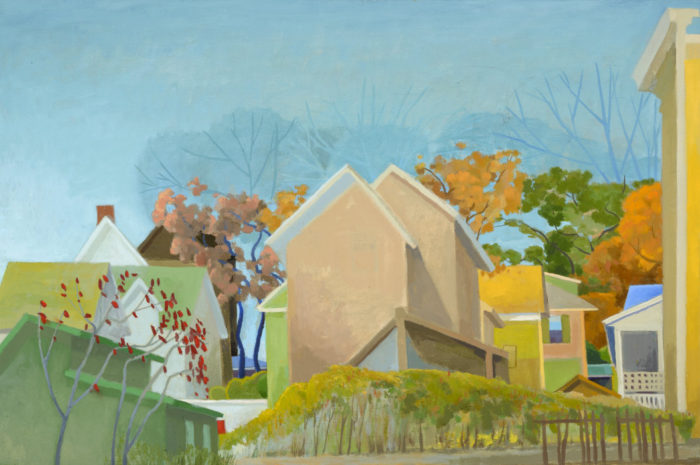
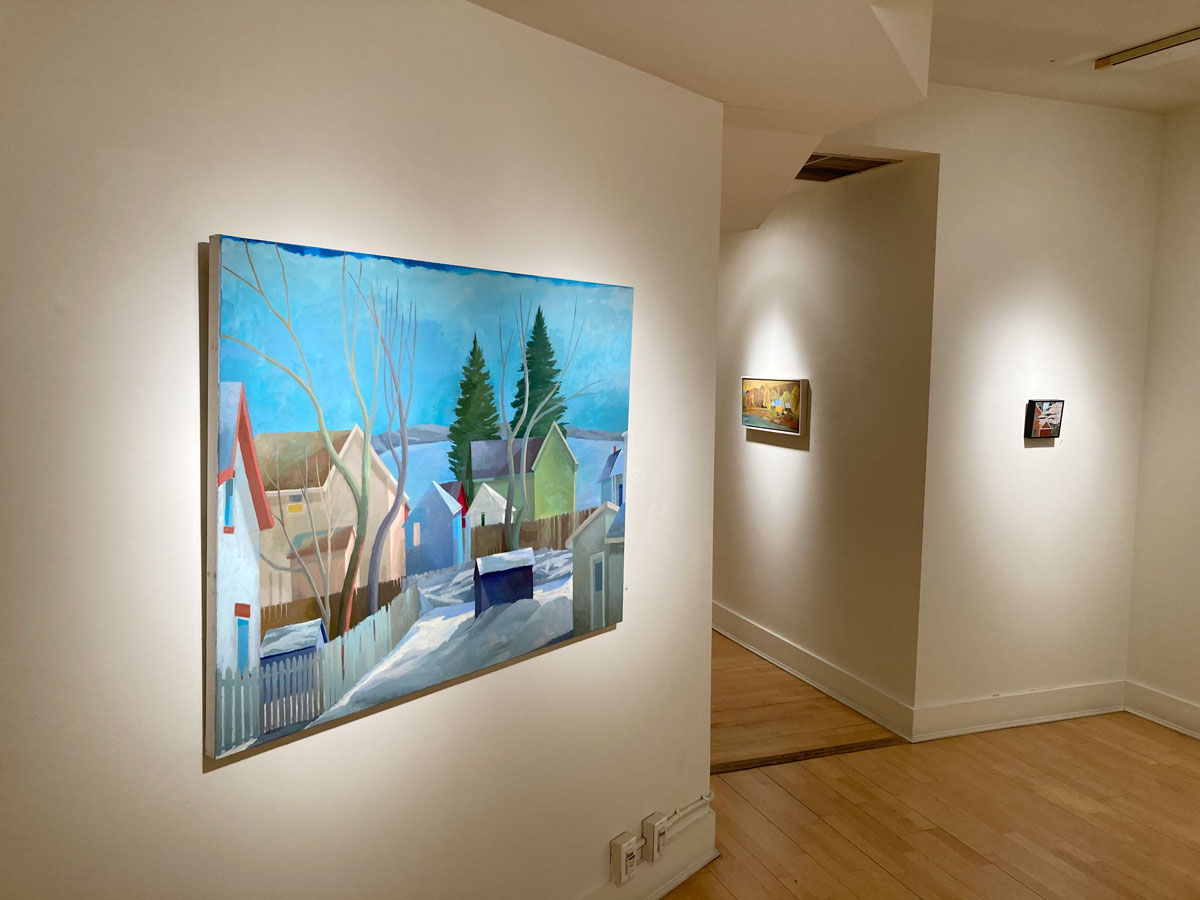

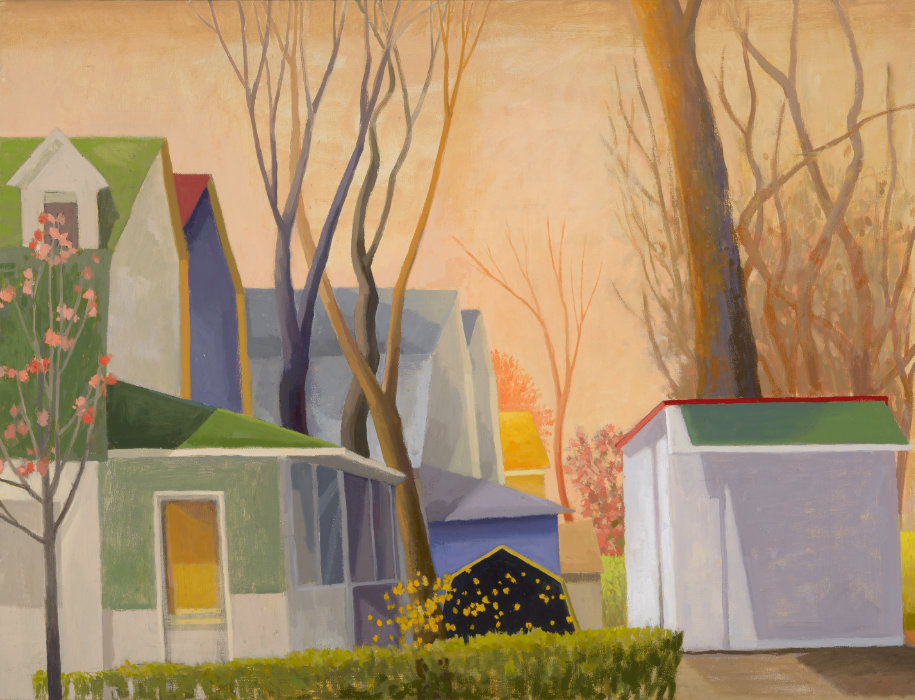
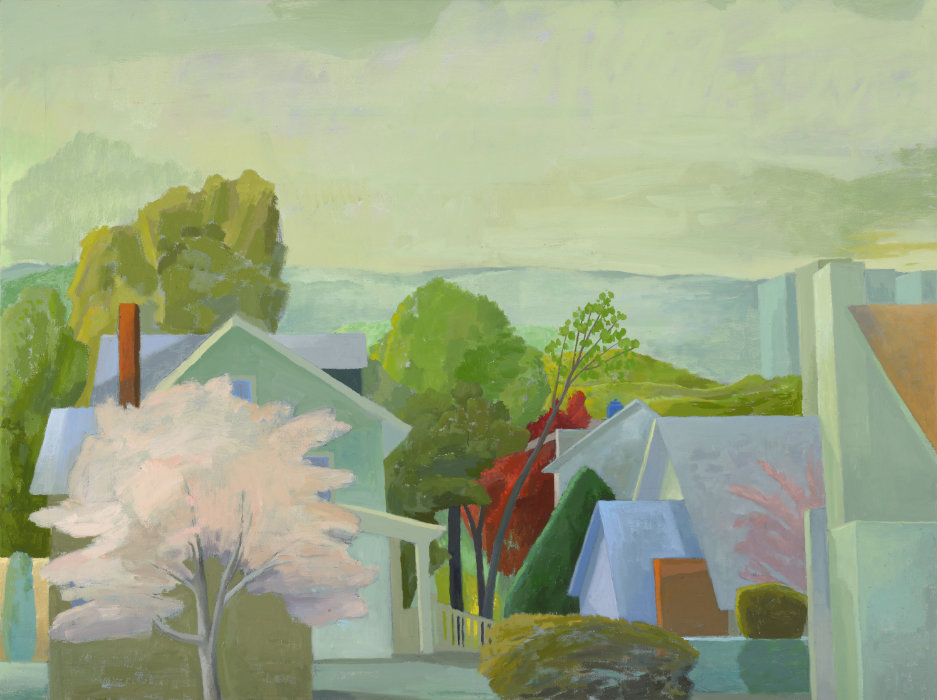

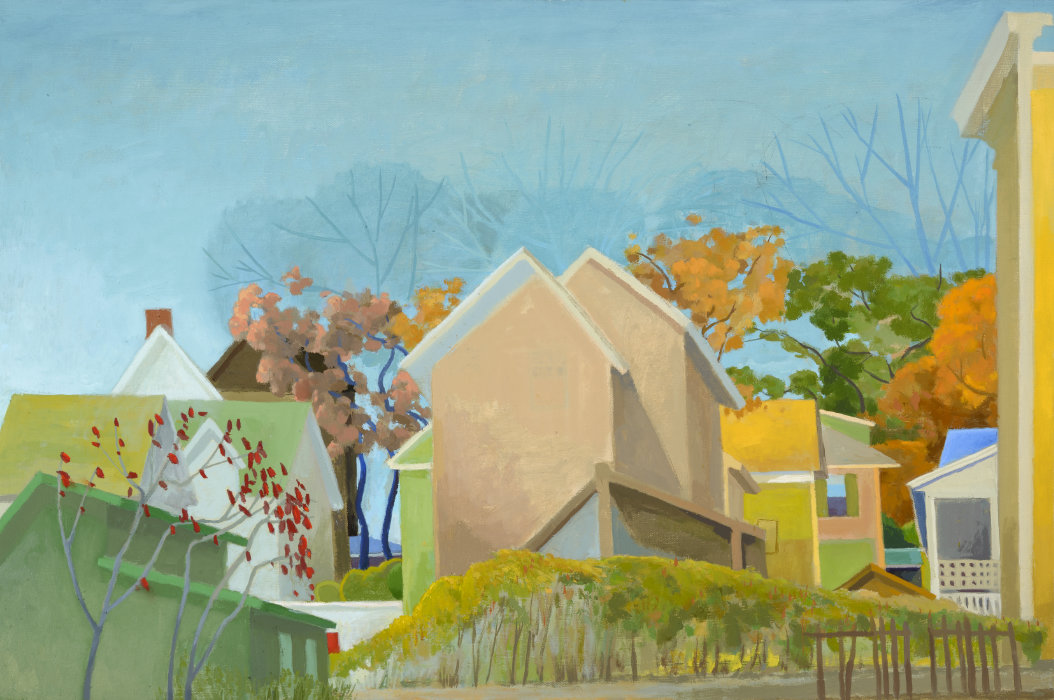
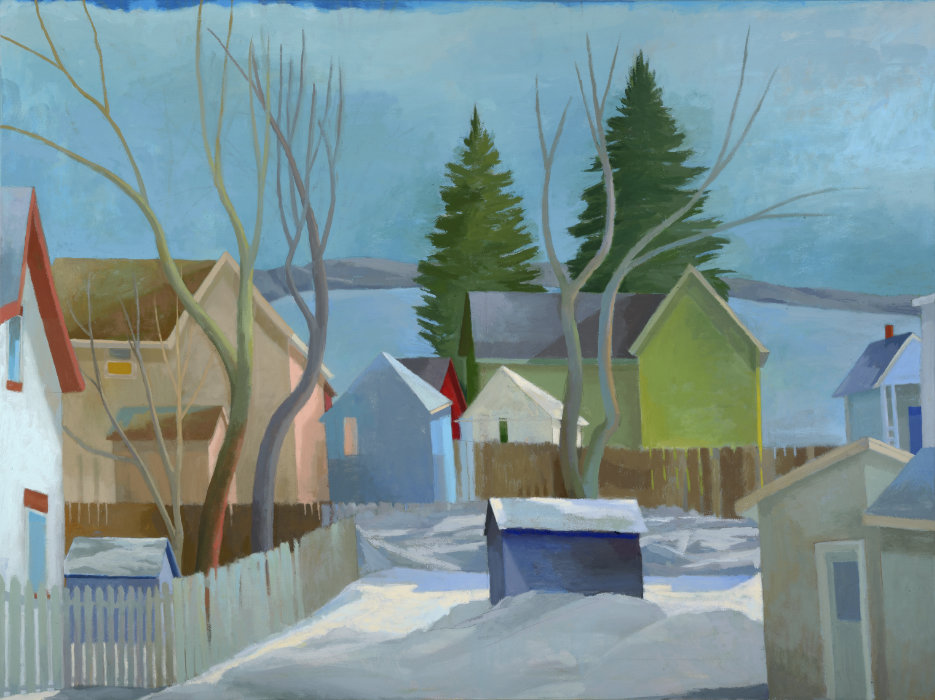
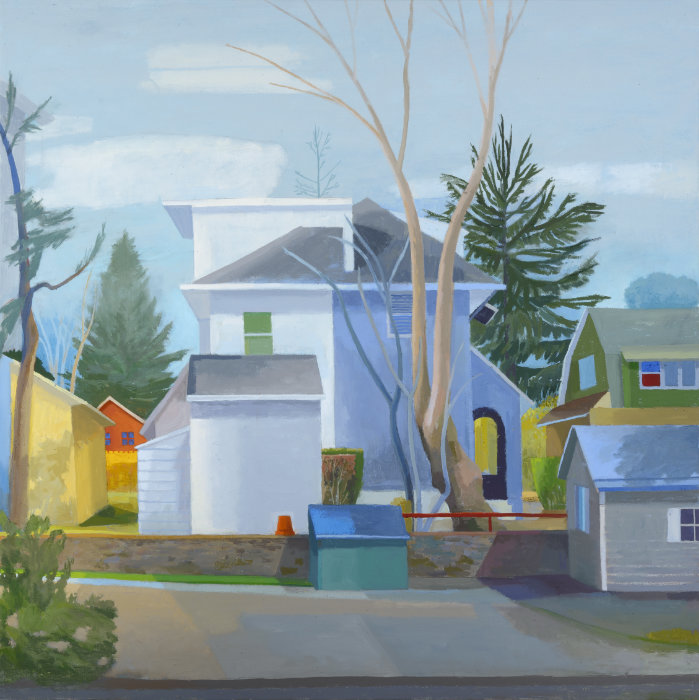
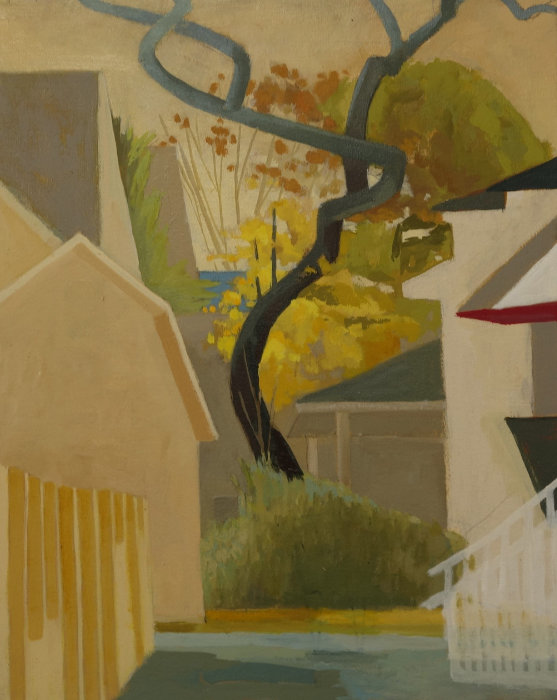
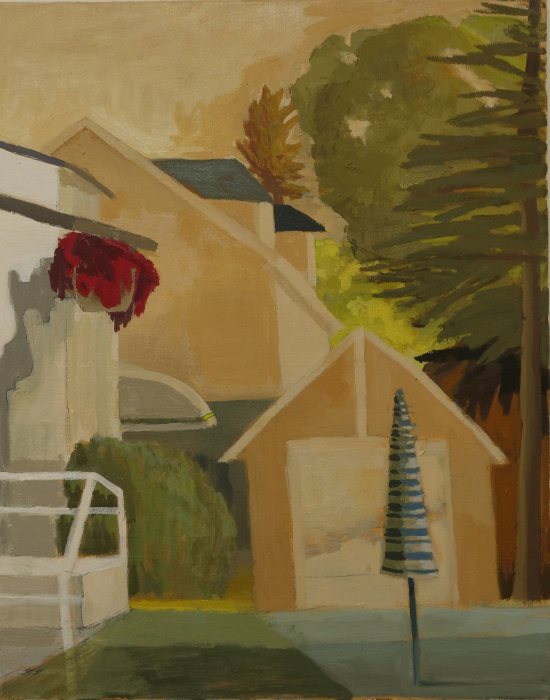

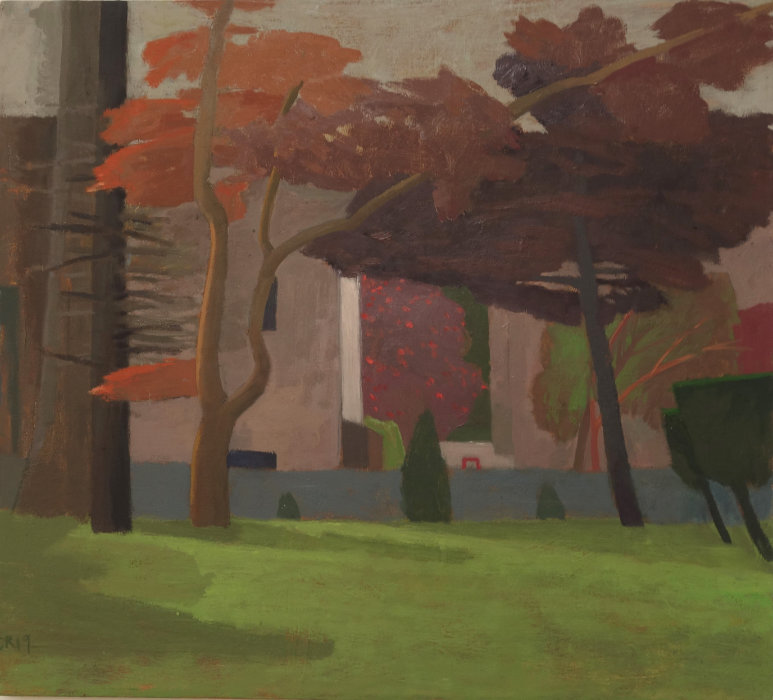
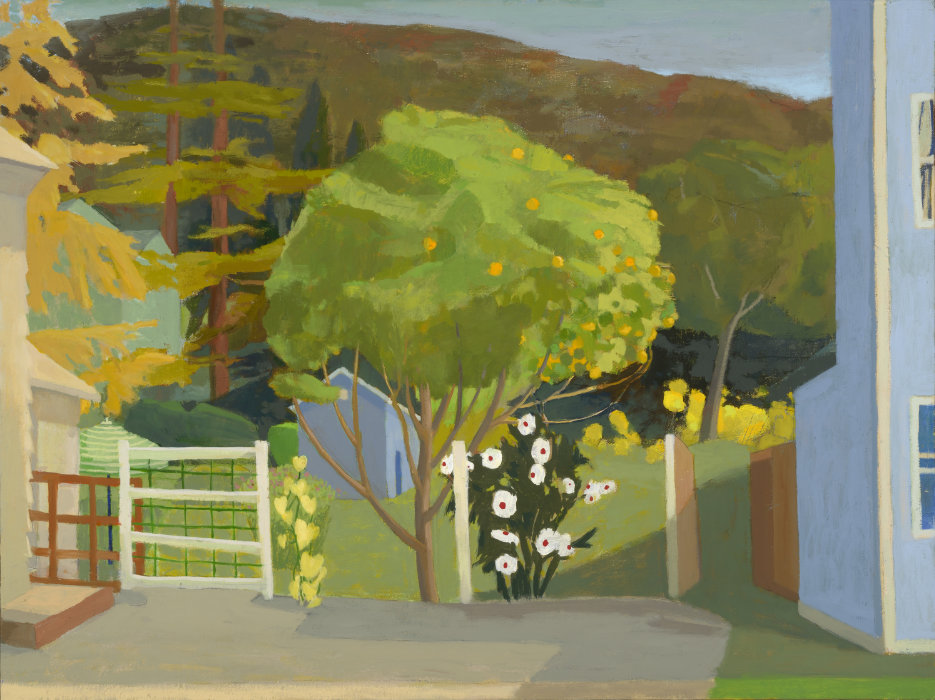
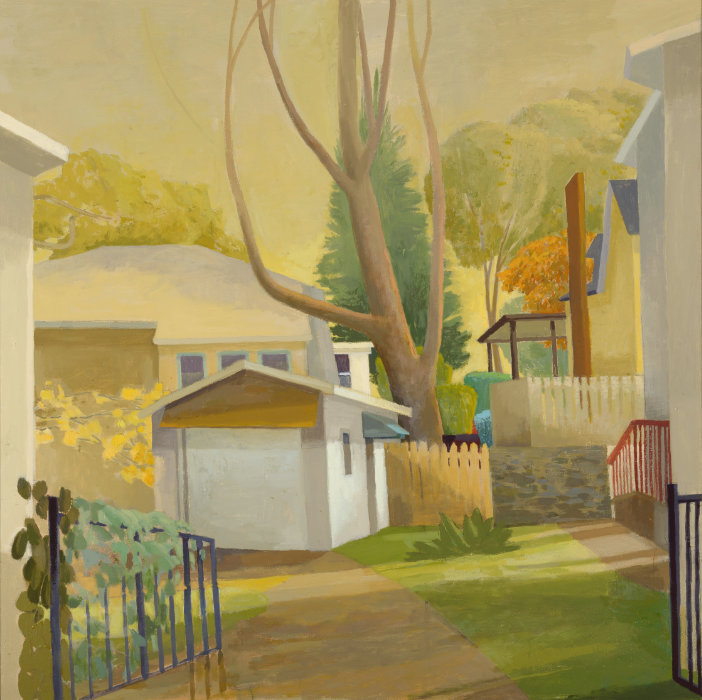
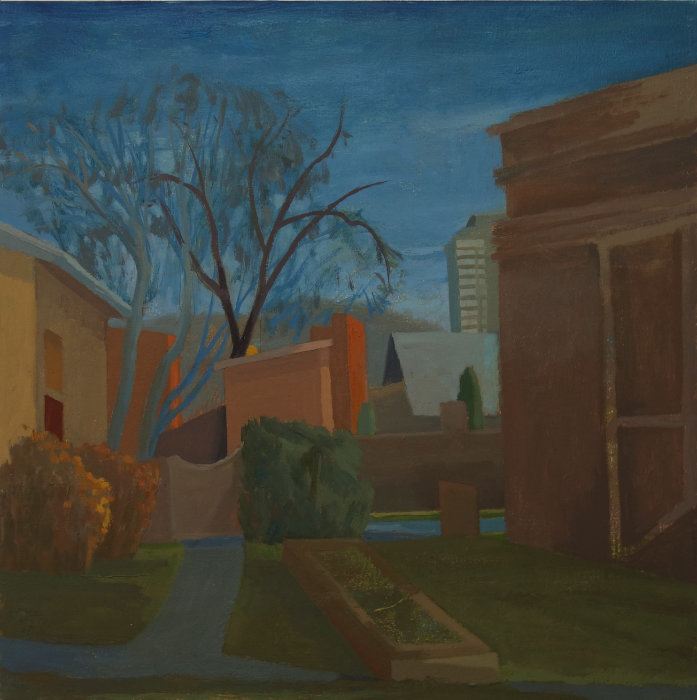
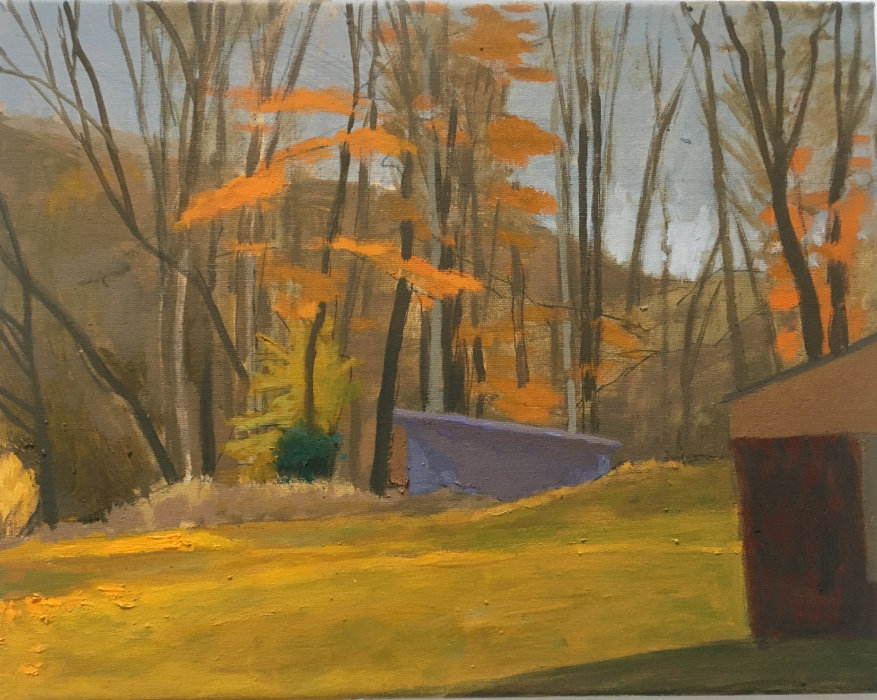
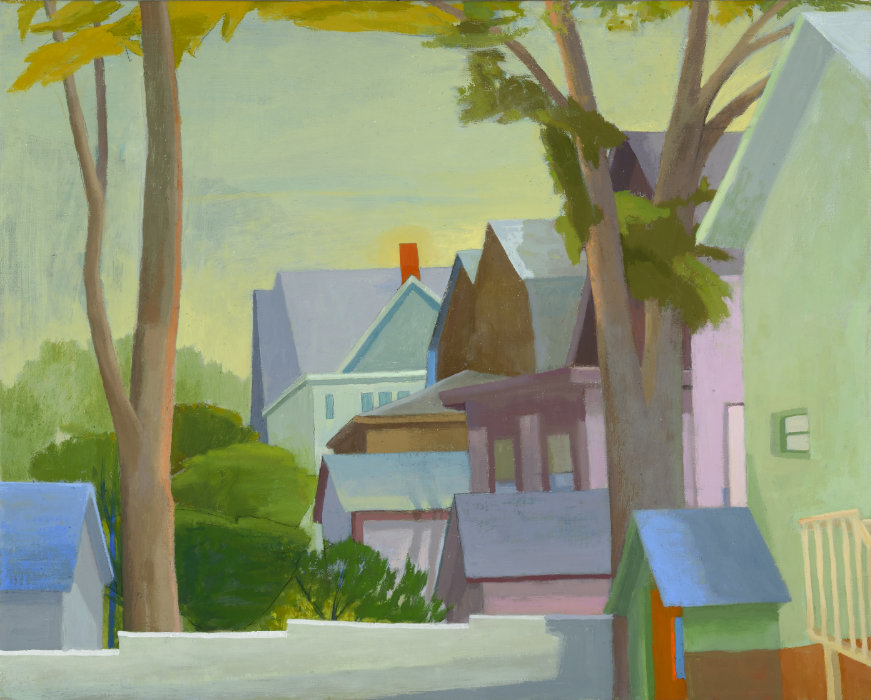
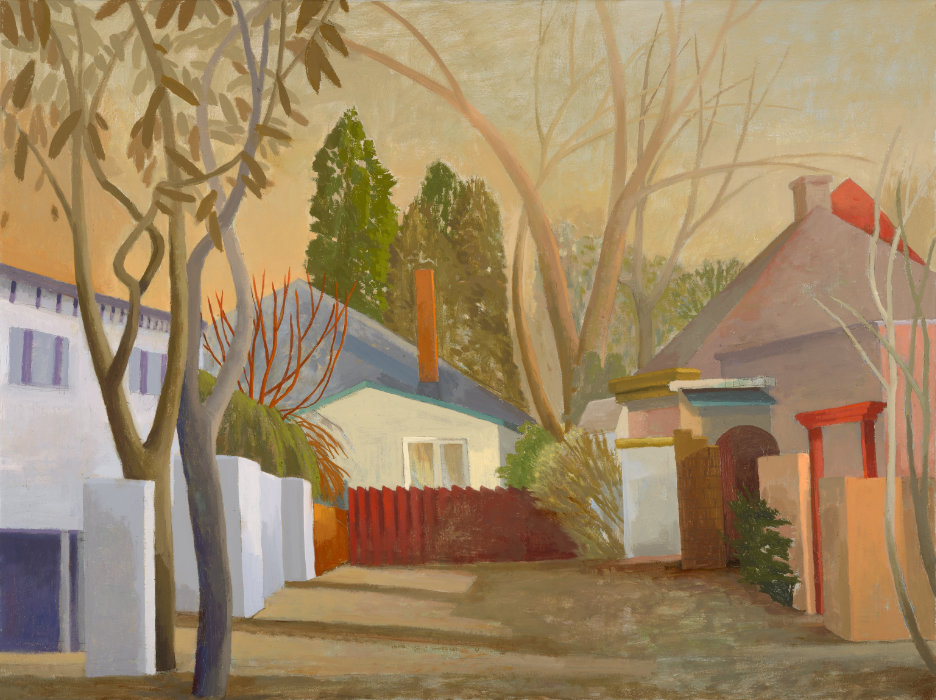
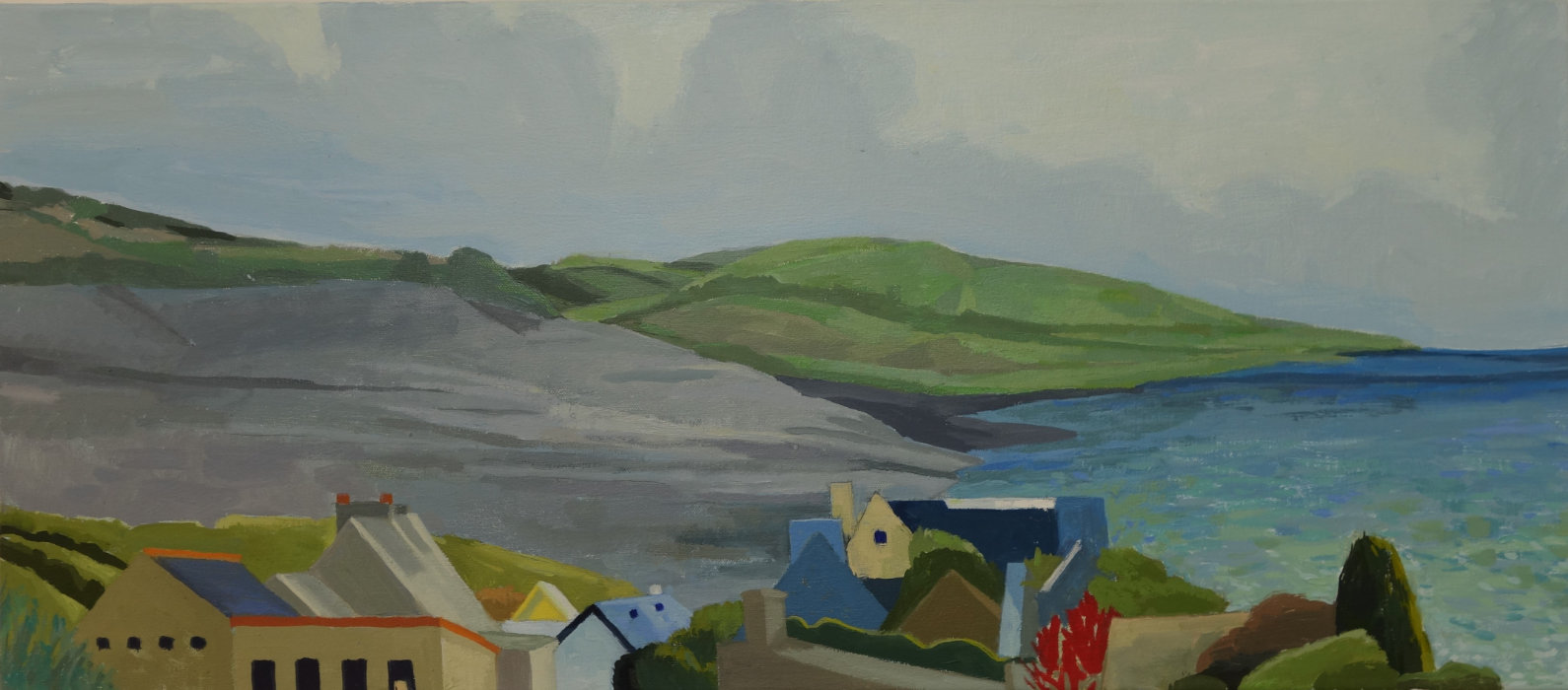
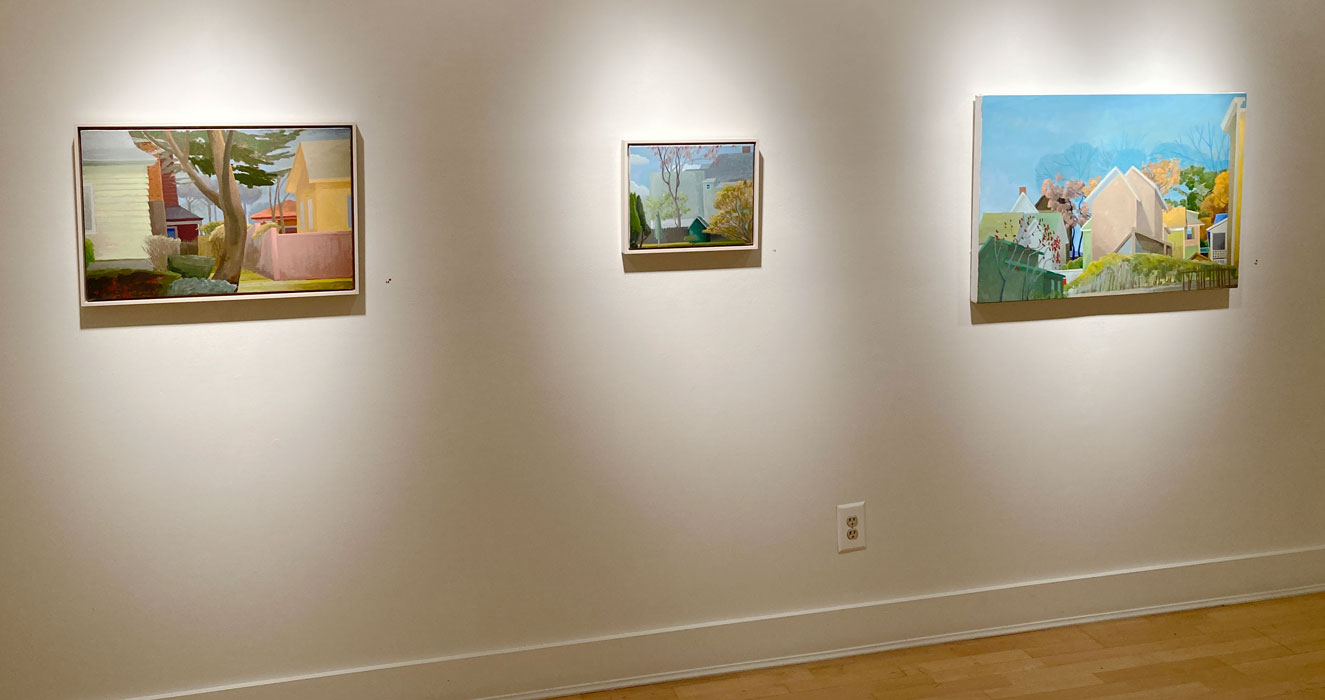
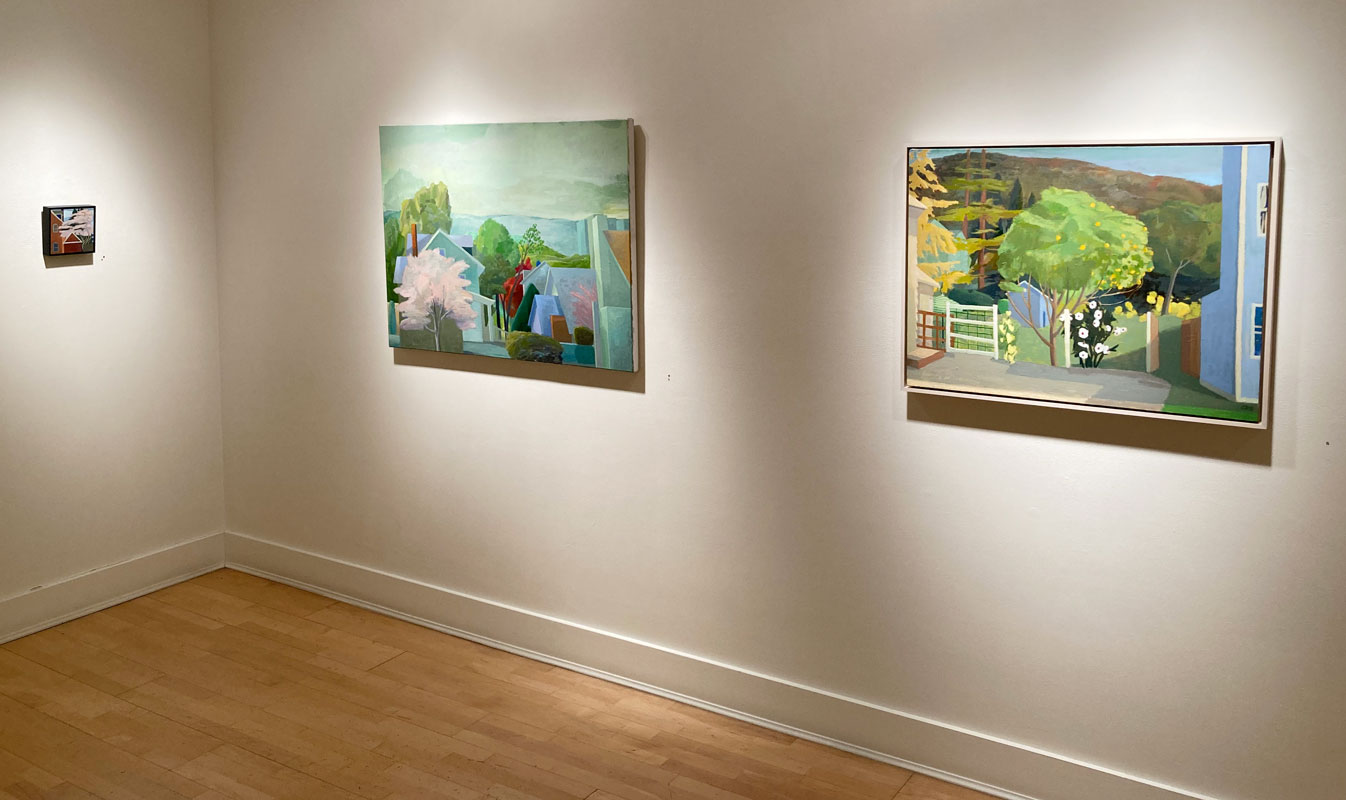
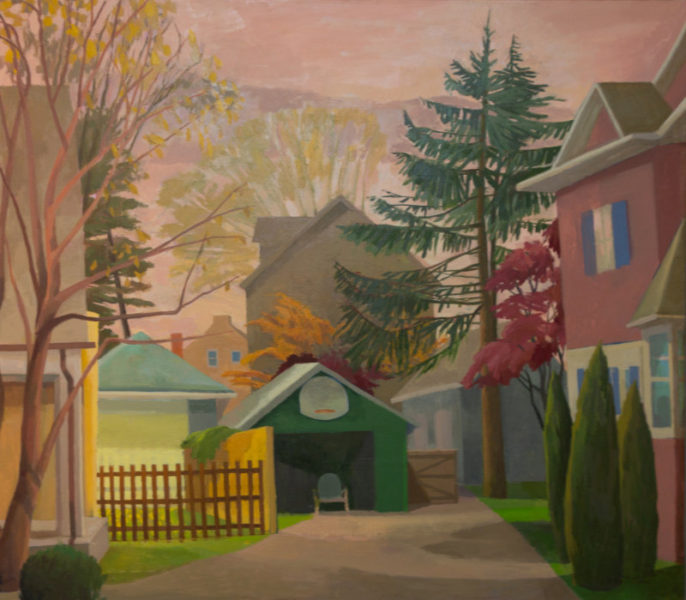




Leave a Reply